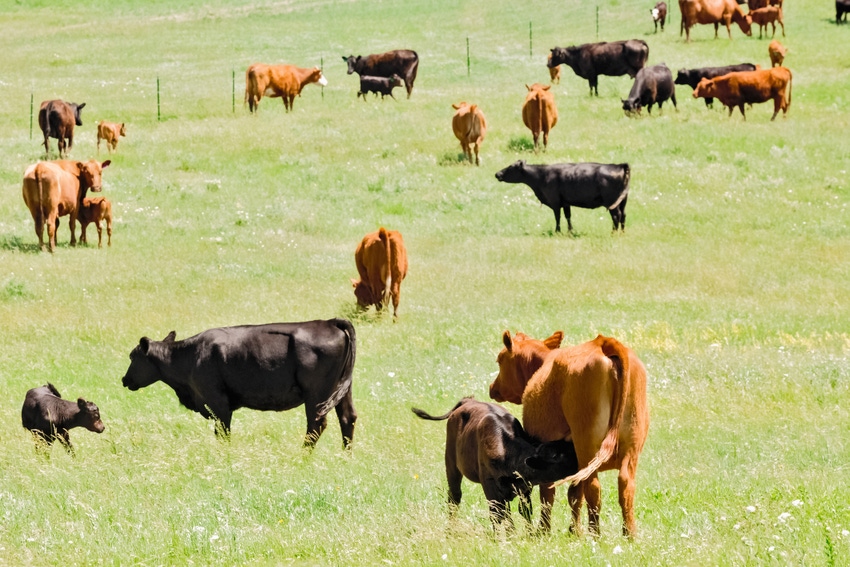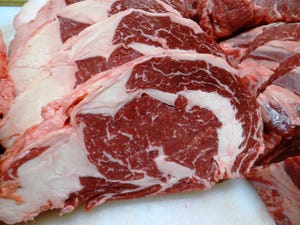Cow-calf margins move higher
U.S. still several years away from moving to an expansion phase.
April 4, 2024

By Livestock Marketing Information Center
Margin estimates for cow-calf returns moved higher following USDA’s January 1 cattle inventory report. Total beef cows were down an estimated 2.5% but the main driver of higher returns was the very low beef heifer replacements, which reached an all-time low of 4.858 million head. The combined 2023 slaughter of beef cows and heifers represented 47% of the beef cow inventory on January 1, 2024. The highest percent in recent decades was on January 1, 2023, which came in at 48%. These are important references because it provides insights to how quickly the cattle cycle may turn. In 2011 and 2012 (January 1), the highest percentage female beef slaughter got to was 44%. The recovery was largely v-shaped, with cattle numbers rebuilding at a fast pace. The U.S. beef cow inventory recovered over 2 million head in three years. It seems unlikely that the U.S. will be able to do that even if there are the financial incentives to do so. The number of heifers removed from the system will likely prevent fast expansion until those numbers recover. Importantly, beef heifer replacement numbers building was also an early pre-cursor to meaningful expansion. It took beef heifer replacements increasing from their lowest point for 5 years before the U.S. beef cow herd marked a year-over-year increase on January 1.
With the U.S. still several years away from moving to an expansion phase, cow-calf producers are set up for spectacular returns as cattle supplies remain tight. High calf prices are expected to continue to improve in 2024 and in 2025 and will likely generate record profit years in both. Drought can have a significant impact on calf prices, it seems unlikely to be the primary driver over the next several years. The National Climate Prediction Center has revised its outlook to include a greater potential for La Nina returning. However, calf prices and supplies of cattle are likely to be the overwhelming factor even if drought occurs.
Cow-calf producers are facing a win-win choice this year between keeping cows and receiving high calf prices for offspring, or culling cows and capitalizing on enormous cull cow values. The Boxed-Cow Beef Cutout reached an all-time record high this month of $259.00/cwt. Fresh 90% lean beef trimmings prices have been rising rapidly in part due to decreased cow slaughter. U.S. cow slaughter is down 13% at the time of this writing. The markets that utilize cow-beef seem likely to push back and will transfer higher prices to the consumer. Menu price changes and alternative buying schedules may already be underway to combat high prices.
Producers thinking about increasing herd sizes have already seen replacement prices increase. Many of the major auction markets are in double-digit percent increases over last year, and those prices are only expected to rise for a few more years. High interest rates are expected to be a major deterrent to increase the cow herd and provides further evidence that the cattle cycle is less likely to switch direction soon.
Key drivers: cattle cycle & inputs
Cow-calf producers have already been experiencing high revenues, but the last few years’ margins have been hampered by high input costs. Feed, hay and oil costs appear to be coming down next year but other inputs such as labor and interest rates are still rising. Revenue this year is expected to outpace input cost increases.
The cattle cycle continues to contract and will likely do so for another 2-3 years. The January 1 cattle inventory report will offer key metrics in the coming years especially regarding heifer retention and expansion possibilities.
Cow-calf producers are in a favorable position and those looking to sell portions of their herd will do very well in either replacement markets or in cull markets. The cull market may take a breather over the summer as prices for cow-beef related items are expected to meet some pushback.
The Livestock Marketing Information Center is a national cooperative non-profit organization that specializes in livestock marketing information and analysis for the purposes of education
You May Also Like



